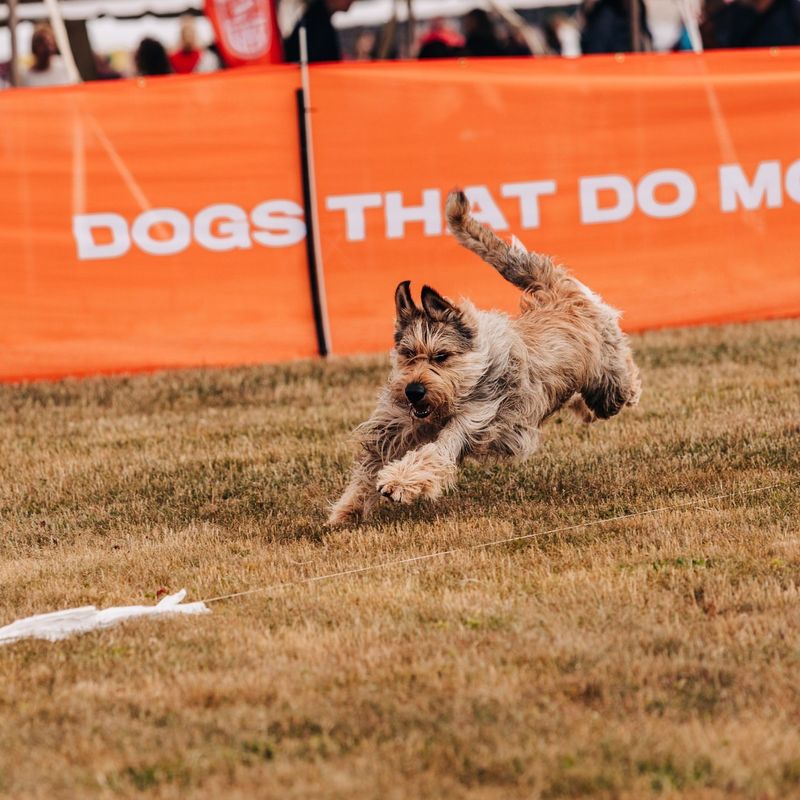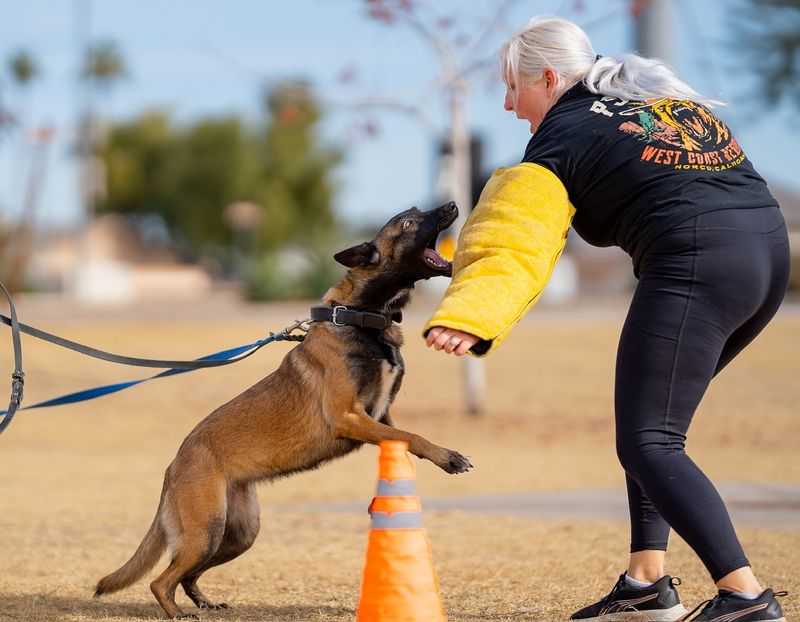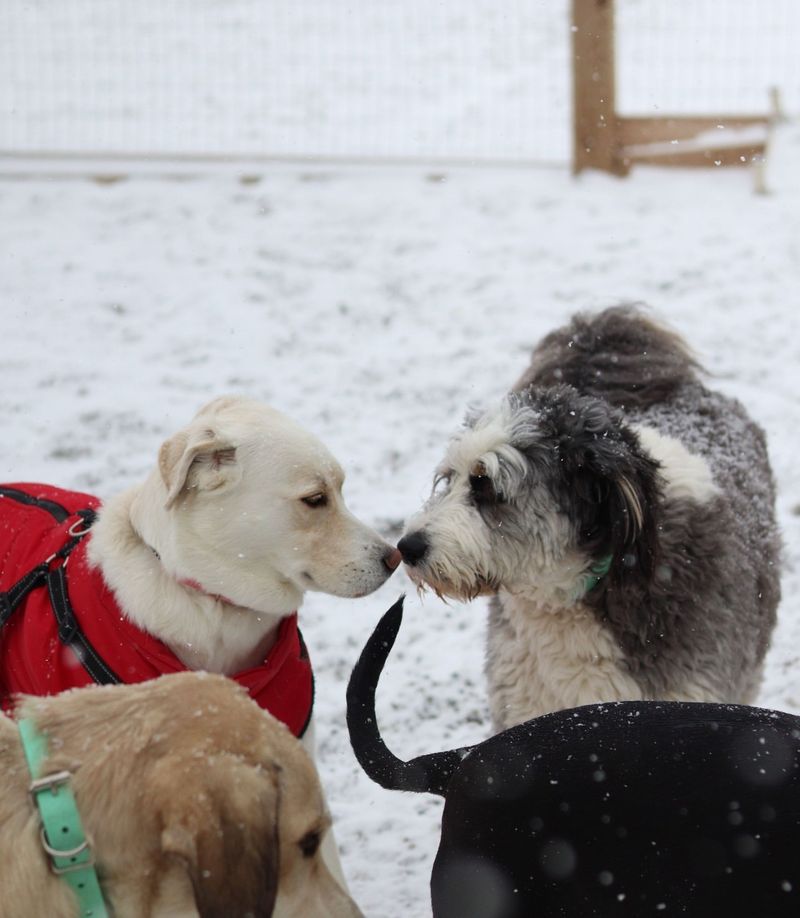10 Smart Ways To Calm A Barking Dog

Barking is a natural way for dogs to communicate, but it can sometimes become overwhelming. Whether it’s the mailman, a new neighbor, or a stray squirrel, your furry friend’s vocal expressions can disrupt your peace and that of your community.
Understanding why your dog barks is the first step toward managing it effectively. With a few creative strategies, you can transform your home into a tranquil haven for both you and your canine companion.
1. The Power Of Distraction

When your dog seems to be barking incessantly, diverting its attention can be a game-changer. Puzzle toys filled with treats or a favorite toy can work wonders. These distractions not only engage your dog’s mind but also provide a sense of accomplishment when they figure out the puzzle. Try placing the toy in different spots around your home or garden to add an element of surprise. Dogs love a good challenge, and this can keep them occupied for hours. Giving them something new to focus on can turn a bark-filled day into a quiet one, without much effort. Introducing new elements like sounds or scents can also distract them effectively. Playing calming music or using lavender-scented sprays can soothe an anxious dog. These sensory changes take their mind off whatever was causing the barking in the first place. Make sure to change things up often, as dogs can become accustomed to the same toys or sounds. Keeping them guessing will maintain their interest and reduce their barking tendencies. It’s like offering them a mini adventure within the safety of their home environment.
2. Exercise Is Key

A well-exercised dog is usually a calm dog. Regular exercise not only keeps your dog physically healthy but also mentally satisfied. Taking them for a brisk walk or a playful session at the park can help burn off excess energy that might otherwise manifest as barking. If your schedule allows, incorporate different types of exercise to keep things interesting. Whether it’s fetch, agility courses, or swimming, variety can keep your dog engaged. Setting a routine can be beneficial as dogs thrive on consistency. They begin to understand when it’s time to play and when it’s time to rest. Over time, this can decrease unnecessary barking. For those with less free time, hiring a professional dog walker can be a great alternative. This ensures your dog still gets the benefit of exercise even when you’re unavailable. Remember, a tired dog is a happy dog, and a happy dog barks less. Different breeds have varying needs, so it’s essential to tailor the activity to your dog’s specific requirements. Be attentive to their reactions post-exercise to understand what works best for them.
3. Positive Reinforcement

Positive reinforcement is a powerful tool in altering your dog’s behavior. When your dog stops barking on command or responds positively to a calming cue, reward them. Treats, praise, or a favorite toy can be effective rewards. This encourages them to repeat the desirable behavior and helps them associate calmness with positive outcomes. Remember, timing is crucial; offer the reward immediately after the desired action. Consistency is key. Make sure everyone in the household is following the same methods to avoid confusing your dog. This collective effort ensures a quicker learning process. Training sessions should be short but regular, maintaining your dog’s interest and reinforcing good behavior without overwhelming them. For dogs with more ingrained barking habits, patience is essential. Change takes time, but with perseverance, your dog will begin to understand what’s expected of them. Avoid punishment-based training as it can lead to fear-based behaviors and stress, which might exacerbate barking. Tools like clickers can also aid in training, providing a clear signal to your dog when they’ve done something right. The combination of sound and reward can be incredibly effective.
4. Create A Calm Environment

The atmosphere in your home can significantly impact your dog’s behavior. Creating a peaceful, calm environment can help reduce barking. This can be achieved through soft lighting, calming sounds, and comfortable resting areas. Consider setting up a dedicated quiet space for your dog, equipped with their favorite bed or blanket. Utilizing aromatherapy can also aid in calming an anxious or overexcited dog. Scents like lavender or chamomile can promote relaxation and reduce stress. Diffusers or sprays can be used in common areas to maintain a soothing ambiance. It’s essential to note that changes in the environment should be gradual to prevent overwhelming your dog. Eliminating loud or sudden noises can further contribute to a calm atmosphere. If possible, keep windows closed during high-traffic times or use white noise machines to mask outside disturbances. These small adjustments can make a significant difference in your dog’s stress levels and, consequently, their barking.
5. Obedience Training

Formal obedience training can be incredibly effective in managing a barking dog. Teaching basic commands like “quiet,” “sit,” and “stay” can provide a foundation for better communication between you and your dog. The goal is to equip them with the ability to understand and respond to your cues, reducing unnecessary barking. Enroll in a class or work with a professional trainer to ensure the techniques are applied correctly. Having a structured training approach can accelerate learning and make the process more enjoyable for your dog. The socialization aspect of group classes can also be beneficial, as interaction with other dogs can help reduce anxiety-related barking. Training requires patience and consistency. Dogs don’t learn overnight, but with perseverance, you’ll notice significant improvements. It’s a rewarding process that strengthens the bond between you and your dog, creating a harmonious living environment. Remember to celebrate small victories along the way to keep both you and your dog motivated.
6. Identify Triggers

Understanding what triggers your dog’s barking is essential for managing it. Observe their behavior closely to identify patterns or specific stimuli that cause barking. It could be the mailman, a neighbor’s cat, or even certain noises. Once you know the triggers, you can work on desensitizing your dog to them. Start by exposing your dog to the trigger in a controlled manner, rewarding calm behavior with treats or praise. Gradually increase the exposure, ensuring your dog remains relaxed. The aim is to help them associate the trigger with positive experiences rather than anxiety or excitement. Avoid reinforcing the behavior by giving attention when they bark at these triggers. Instead, redirect their focus to a more appropriate activity. With time and patience, your dog will learn to remain calm in situations that previously caused them to bark. This method requires commitment but can lead to long-lasting results.
7. Socialization

Socialization plays a crucial role in a dog’s behavior. Regular interaction with other dogs and people can help reduce anxiety-induced barking. It provides an opportunity for your dog to learn acceptable behaviors through observation and mimicry. Parks, dog-friendly cafes, or training classes can be excellent venues for socialization. Introduce your dog to various environments slowly, ensuring they feel safe and comfortable. The idea is to expose them to different sights, sounds, and situations, building their confidence and reducing fear-based barking. Positive experiences in social settings can translate to calmer behavior at home. Be mindful of your dog’s comfort level. Pushing them too quickly into new situations can backfire, increasing anxiety rather than reducing it. Patience is key; allow your dog to explore at their own pace. Over time, you’ll notice a more well-adjusted, quieter companion.
8. Mental Stimulation

Mental stimulation is just as important as physical exercise for a dog’s well-being. Engaging activities like puzzle toys, scent games, or interactive feeding trays can keep your dog occupied and reduce boredom-related barking. Rotate toys regularly to maintain interest and challenge your dog. Introducing new games or activities periodically can keep them mentally sharp and less prone to unwanted behaviors. This not only enriches their environment but also provides a healthy outlet for their energy. Interactive play sessions with you can deepen your bond and help your dog feel more secure and content. Whether it’s a game of hide and seek or teaching new tricks, these activities can distract your dog from triggers that may cause barking. A well-stimulated dog is often a quieter, happier dog.
9. Use Technology Wisely

In today’s digital age, technology can be a valuable ally in managing a barking dog. Devices like smart pet cameras allow you to monitor your dog’s behavior remotely, providing insights into their barking patterns. These cameras often come with two-way audio, enabling you to communicate with your dog when you’re not at home. There are also automatic treat dispensers that can be activated remotely. These can be used to reward calm behavior, reinforcing good habits even when you’re away. Apps that emit calming sounds or music specifically designed for dogs can also be effective in reducing anxiety and barking. While technology offers many solutions, it should complement, not replace, personal interaction and training. Use these tools to support your efforts in creating a bark-free environment, ensuring your dog remains happy and well-adjusted.
10. Consult A Professional

Sometimes, managing a barking dog requires expert intervention. If your dog’s barking becomes unmanageable or is rooted in deeper behavioral issues, consulting a professional can provide tailored solutions. Certified dog trainers or behaviorists can offer insights and techniques that you might not have considered. They can work with you to develop a personalized training plan, addressing the specific needs and triggers of your dog. This can be particularly beneficial if your dog has experienced past trauma or anxiety disorders. A professional’s objective perspective can be invaluable in identifying subtle cues and behaviors that might be contributing to excessive barking. Regular follow-up sessions ensure progress is tracked and adjustments are made as needed. Investing in professional help can lead to a happier, more peaceful home environment. Remember, seeking assistance is a proactive step towards enhancing the quality of life for both you and your dog.






